In 1985, basketball’s best new big man landed in New York City — and nearly Beaverton. Learn the inside story behind the Swoosh pivoting away from the storied center.
Today, Nike sits atop the totem pole of power players in basketball shoes. Turning 50 years old in 2022, the Swoosh absolutely owns the market where hardwood footwear is concerned, having the ability to win any bidding war when it comes to taking on talent.
Back in 1985, the Beaverton brand was only just beginning to find its footing in the roundball arena. For years, Converse and Adidas dominated the category, padding the pockets of college basketball’s top coaches while covering the feet of numerous NBA All-Stars.
But after going all in on a North Carolina shooting guard high on upside and charisma named Mike Jordan, Nike nixed their team-based approach to branding basketball by making the Chicago Bulls rookie the brand’s first signature athlete.
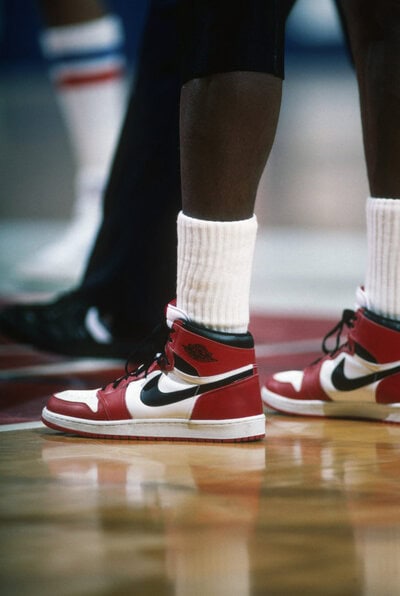
After playing preseason games in the Air Ship, the Air Jordan 1 arrived at retailers by the spring of MJ’s Rookie of the Year campaign, upending the market with its rebellious flair.
“At the time, Michael had around one million units between men’s, boys, KOs, and infant sizes,” Brad Johnson, former Head of Category at Nike Basketball, told Boardroom in August.
“It was about 1.2 million units worth of royalties to stay with Air Jordan. The average shoe at that point in time was about 60,000 or 70,00 units so it was about 10 to 20x the volume.”
Having signed MJ in Oct. 1984 for $500,000, the deal paid itself off in less than a year, with Nike reporting orders and retail sales already topping $55 million by May 1985.
As a result of MJ’s unprecedented success, the brand theoretically had a big budget heading into the next NBA Draft in June of 1985.
The consensus star in the class? Georgetown big man Patrick Ewing, no question.
With the New York Knicks winning the first-ever draft lottery, the stage was set for the 7-foot center to go first overall in basketball’s biggest market. Having played four seasons under Hoyas head coach John Thompson — who also served as a board member at Nike — it was all but assumed he’d sign with the Swoosh.
Not only was he a shoo-in to ink with Nike, but as the 6453ers tell it, he was also set to lead their famed Force franchise.
Man in the Middle
From the early days of George Mikan to the eventual arrival of Lew Alcindor, the game of basketball was run through the big guys that played in the post. To win a championship, a team needed a center that could control the paint on both offense and defense.
Over the course of the 1980s, seven of the 10 No. 1 overall picks in the NBA Draft played center, and when it came to college careers, nearly none could boast one as storied Patrick Ewing. Having won Big East Defensive Player of the Year in all four of his seasons at Georgetown, the top spot in the ’85 lottery was all his.
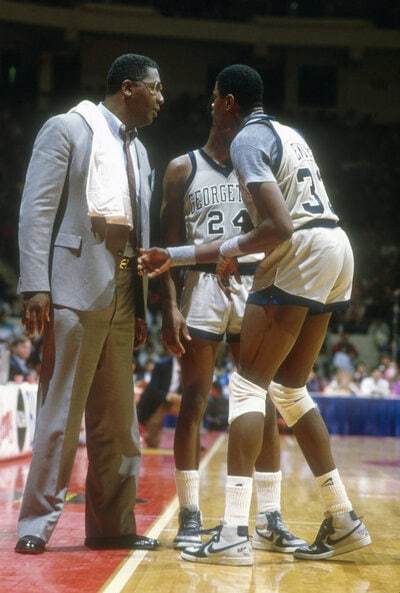
As the focal point of Hoya Paranoia, Ewing endorsed an array of Nike Basketball models in an unofficial fashion. From the Legend to the Terminator, the Jamaican-born kid from Cambridge was as big an endorser for Swoosh high-tops as almost anyone in the game at that point.
Due to his size and stature, Nike looked to align Ewing with their Force Camp: a collection of court shoes made for big men that played in the paint. The name and notion were all built off of 1982’s Air Force 1, the brand’s first basketball shoe with Air technology.
“When I came in, we came out with the Force line of shoes connected with Air Force 1,” Ron Hill, a former Nike employee that oversaw product merchandising in the ’80s and ’90s, told Boardroom. “We went with Air Force 1, Delta Force, which was mid-range, and Court Force.”
The thinking was simple: Through Force, Nike could create brands within a brand. It was all part of a larger-scale play to compete with competitors that had long lived in the hallowed hardwood space.
“That was a three-shoe collection and we wanted to establish Force as part of basketball,” Hill continued. “It was a branding thing, we basically sold three brands: Force, Flight, and Jordan. Later came Uptempo.”
Internally at the brand’s Beaverton offices, the Swoosh was keen on the fact that they could not only own the hardwood collectively but also take out the competition one by one through Flight and Force.
“We kept track of those collections and would compare ourselves to Converse and New Balance,” says Hill. “Collectively, we had 70% of the basketball market. We would sign athletes with collections in mind. David Robinson and Charles Barkley were gonna be Force guys. Penny Hardaway was going to be a Flight guy.”
But even before Barkley became associated with his own signature shoe or the Admiral had ad campaigns written around his polite personality, Patrick Ewing was to lead the Force line with Flight in the same spirit as MJ.
“At first, Jordan was going to be commander of the Flight collection, and Michael actually got paid off Flight for a while,” Hill notes.
Due to his deal and the original orientation of the Flight franchise, MJ was set to score royalties off not just Air Jordans, but the sales of shoes like the Nike Air Flight 89 or Nike Flight Lite. Instead, Air Jordan became its own brand within the brand, making Mike millions — and now billions –based on its singular brilliance.
The outlook was that Patrick Ewing could generate the same energy and income for Force.
And the man in the middle of Mike and Ewing throughout this process? Their agent: the legendary David Falk.
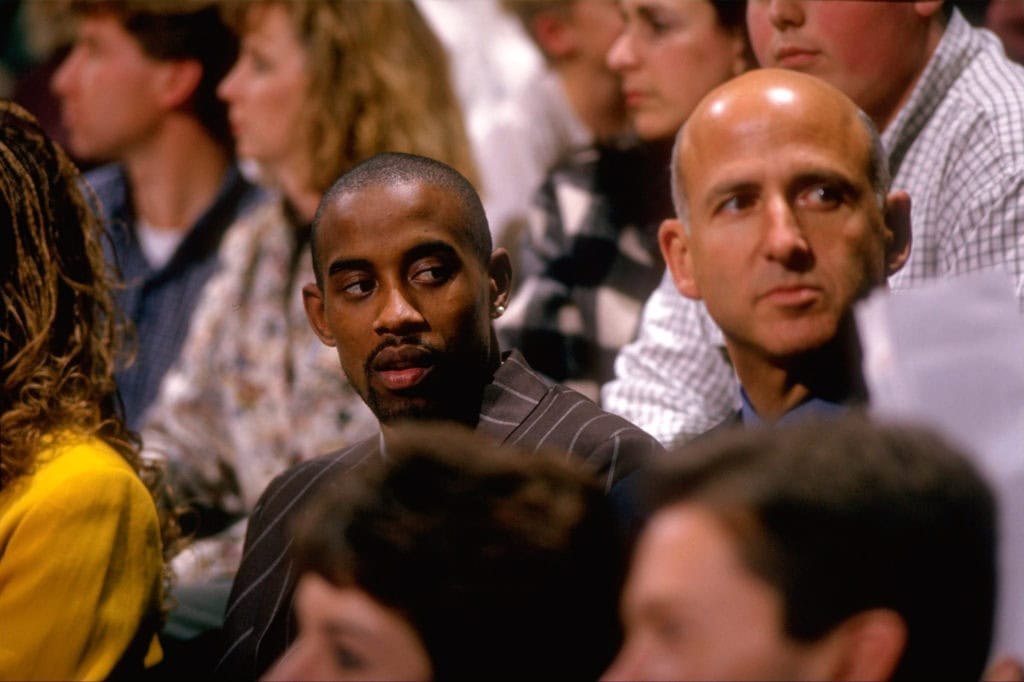
Making good on his deal with Mike at Nike and a close comrade of Coach Thompson, the path was cleared for Ewing to take over the brand’s heaviest hoop high-tops.
“Patrick Ewing was a Nike athlete all through Georgetown,” former Nike Basketball Head of Category Brad Johnson told Boardroom. “Rob Strasser called a meeting and Peter Moore introduced the E-Force line. That was going to be the counter to Air Jordan and it was going to be Patrick Ewing’s collection.”
And so it was to be: Foot Locker floors would be covered with cardboard cutouts of MJ and Ewing, each laced head-to-toe in Nike apparel corresponding to their respective Flight and Force camps.
So, why did it never happen?
Deal or No Deal
In a shoe box-shaped room full of Nike execs, Peter Moore — the creative director in Beaverton behind the Air Jordan concept — ran his peers through what was to be E-Force.
From footwear to apparel, Moore introduced items set to position the Force line as that of Ewing’s through unique branding. Next, Strasser walked through the specifics of the contract negotiations.
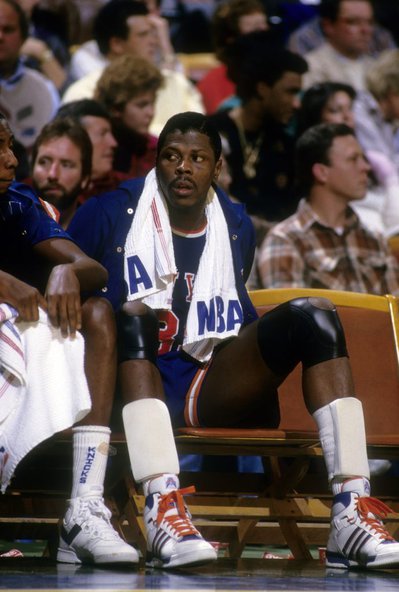
“Rob got to the end and goes, ‘Here’s the deal: Patrick Ewing has been to Adidas and they’ve offered him $750,000 a year to wear Adidas products, and I’m assuming they’re going to have something to counter the Jordan,'” Johnson recalls.
“He goes around the room and Rob says, ‘We’re gonna go around the room. Should we sign Patrick Ewing for $750,000?’ Everybody is saying yay or nay and giving their opinion.”
Around the room, all the execs cast their vote with the table on pins and needles.
The final swing vote, and essentially the decision, lands in the lap of Moore, the man who just spent the last few months designing Patrick’s pitched E-Force franchise.
“The last guy is Peter, who’s at the head of the room sitting next to Rob,” Johnson continues. “He just designed the entire collection and concept for Patrick Ewing, so everyone is thinking he’s gonna say we’ve gotta sign him.”
Suddenly, a curve ball.
“He looks at the room and goes, ‘I don’t know if we should sign Patrick Ewing or not. I do know one thing: I know that I don’t want to be the guy that’s gonna call up Michael Jordan and tell him, ‘We just signed Patrick Ewing for $250,000 a year more than what we paid you — and we have you under contract for four more years at that price.'”
The reaction was instantaneous.
“Everybody in the room went, ‘Woahhhhhh,’” says Johnson. “It was so prophetic. It was this amazing epiphany and we didn’t sign him.”
The Aftermath
Entering his rookie season in New York City, Patrick Ewing donned the Three Stripes.
As history tells it, David Falk reached back out to Nike in the 11th hour, citing his client’s desire to sign with the Swoosh. Still, Moore made it known that they wouldn’t match the offer from Adidas simply because it was more than Mike’s.
In a sense, it all worked out for all involved — not only did Patrick get paid out by Adi, but he became the face of their entire basketball category.
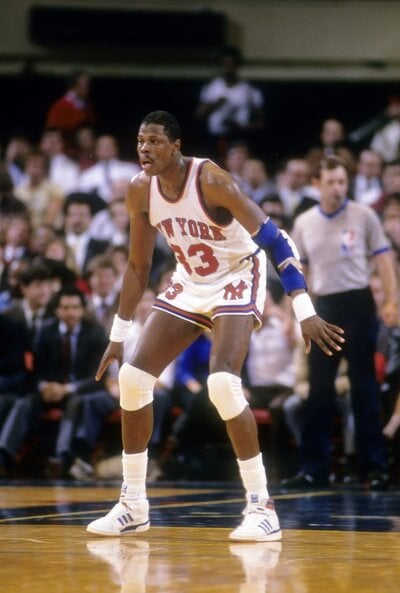
By the Spring of 1986, he was named NBA Rookie of the Year, making good on his top pick status and adding juice to the likes of the Forum, Conductor, Rivalry, and Attitude shoes over the course of the 1980s.
“What transpired was the Forum,” heralded Nike designer Bruce Kilgore told Boardroom.
Through the Forum, Adidas had an answer to the Air Force 1 and essentially Nike’s court category for centers.
All the while, the Swoosh continued to build out its Flight and Force camps. Quickly, the learning was clear: despite centers swinging the strongest odds over the course of history, fans wanted to look and play like guards.
“Flyers sell; people want to emulate that,” Hill told Boardroom.
“Charles Barkley wanted to be a Flight guy, everybody loves the above-the-rim guy. Our battle was trying to get big guys to stay in Force. David Robinson was one of the few because we had “Mr. Robinon’s Neighborhood” and all that. Charles would say, ‘I don’t play in the paint, I can take the ball full court.’ So we made an Alpha Force for him which was lower profile and lighter.”
While fans of hoops, hip-hop, and high tops reflect favorably on Force favorites from the late ’80s and early ’90s, sales reps at the Swoosh during said era feel slightly different.
“Big men don’t sell shoes,” Dave Siddons, a Nike salesperson during that timeframe, told Boardroom.
By 1989, Ewing exited his Adidas deal, as the brand was rebuilding. Oddly enough, Moore and Strasser — the same execs that built Air Jordan and assembled the E-Force pitch — would leave Nike to join Adi, eventually launching EQT with the Three Stripes.
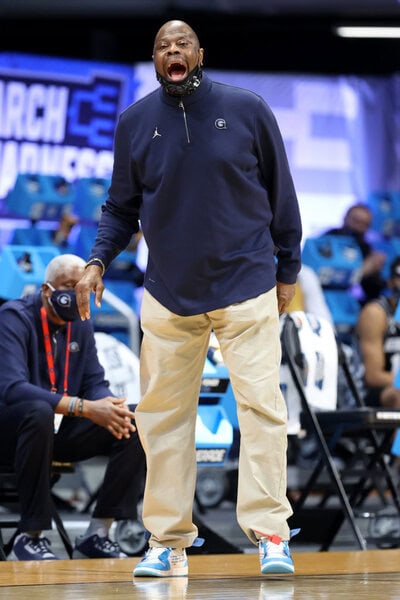
Keen about the size of the New York market and the attention individual superstars could get, Falk and his star center launched their own brand, Ewing Athletics, in 1989. According to Falk in a GQ article, the center’s namesake company moved nearly $100 million in sales by 1990.
Affordable in pricing, Falk found a hole in the market that proved likely more profitable than E-Force ever would’ve been.
Ironically enough, Ewing would be playing in Nike Force models by 1997.
Closing his career in the brand that almost signed him, Pat played the last five seasons of his Hall of Fame profession in the same brand that sponsored his famed four seasons at Georgetown.
One simply has to wonder just how big the Force line would’ve been had Nike inked Ewing entering his rookie season. Just the same, it’s worth pondering if the size and stature of the contract alone would’ve rocked the boat and led a certain star shooting guard to leave the brand.
All told, maybe everything worked out exactly how it should have: Nike is now the biggest brand in sportswear, Patrick’s Ewing Athletics line lives on through retro royalties, and Georgetown — the team Pat played for and now coaches — is endorsed by his buddy Michael’s massive Jordan Brand.
“I’m fine that Ewing didn’t sign with us,” Hill said, content with how things shook out for all parties involved.
“But trust me — Falk would’ve come back and Mike would’ve got more money.”